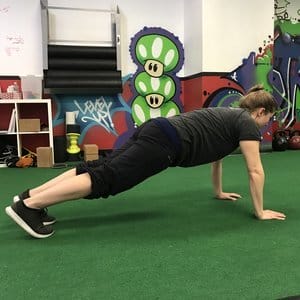v\:* {behavior:url(#default#VML);}o\:* {behavior:url(#default#VML);}w\:* {behavior:url(#default#VML);}.shape {behavior:url(#default#VML);} Normal 0 false false false false EN-US X-NONE X-NONE /* Style Definitions */table.MsoNormalTable{mso-style-name:”Table Normal”;mso-tstyle-rowband-size:0;mso-tstyle-colband-size:0;mso-style-noshow:yes;mso-style-priority:99;mso-style-parent:””;mso-padding-alt:0in 5.4pt 0in 5.4pt;mso-para-margin:0in;mso-para-margin-bottom:.0001pt;mso-pagination:widow-orphan;font-size:12.0pt;font-family:”Cambria”,serif;mso-ascii-font-family:Cambria;mso-ascii-theme-font:minor-latin;mso-hansi-font-family:Cambria;mso-hansi-theme-font:minor-latin;}Think of the best dancer you know. Whether it’s Mikhail Baryshnikov, Misty Copeland, Michael Jackson, or this guy:
Taking the beauty of their artistic expression out of the picture, what is it you admire about how they move? You might not be able to put a finger on it so let me try.
It’s probably their complete and total ownership and understanding of their own bodies.
Their bodies have a mix of perfectly controlled tension and relaxation. They make it look easy. Some might call that mastery. I can assure you it takes a lot of time and devotion, a lot of practice, to make something so complex look so effortless.
I can hear you right now: “What does this have to do with push-ups?”
You ask such fantastic questions, friends!
A properly performed body-weight push-up is pretty much the same thing—proficiency, technique, understanding, and command over one’s own body.
The push-up is unique in this aspect. Why? It’s pretty much the only exercise where all you need is your own body to make it challenging. No other tools are necessary, and as a bonus it can be done anywhere.
Before you start mentioning squats, chin-ups, pull ups, and every other body weight exercise we do, let me say—fair enough. But here’s the thing, our bodies are used to sitting down and getting back up. We do that all day, everyday. Starting first thing in the morning for most of us. Our feet are used to supporting us. It’s pretty much what they do for a living. As to the chin-ups, pull ups, etc., we still need a thing to pull against. Plus, not everyone can do chin-ups or pull ups. And everyone can do some type of push-up.
Pushups Are a Core Exercise
“I’m not quite sold, Coach Kcal.”
Alight. Allow me to present my case. First and foremost let’s get one thing straight—a push-up is primarily a core (and total body) exercise NOT purely a chest exercise.
Now that I have your attention what’s Step 1 to push-up domination? Really, really, really nail your planks.
“Planks, planks, everything’s a plank, all the exercises are core exercises, blah, blah, blah…” Well…yes. They are. They pretty much are. Without a strong center, our bodies’ movements are pretty much cat herding.
So basically a push-up is a moving plank. “Okay, so if I’m nailing my planks how come push-ups are still so hard and I don’t dance like Michael Jackson?”
Well the first part I can help you with. The second? Not so much.
Let’s Break It Down
Let’s go over some of the basic steps involved in the push-up. Don’t worry
- Start in a good, solid push-up plank position (wrists under shoulder blades, hips and shoulders aligned, feet together, long neck, head and heels pressing toward opposite walls).
- “Screw” your hands into the floor.
- While maintaining that tension, pull or row the floor to you (yes, using your back muscles—see? Told you this wasn’t just a chest exercise).
- Shove or press the floor away with your entire body.
“Wait, what was that last bit? Push the floor away from me? I thought I was pushing myself away from the floor?”
Ah, now we are onto something! You see when we are doing a push-up we are pushing, reaching, or driving something away from us. That something can be the floor, the barbell on the squat rack, a bench, or heck even a wall.
So essentially when we do a push-up we are literally pushing the Earth away from us. Pretty powerful stuff, huh?
Let’s think about that for a minute in the context of push-up technique. When we push something away from us in a standing position where do our hands go? How about our elbows, our butts, our backs?
Not sure? Stand up against a wall. Now push it away from you. Notice how your body moves. Notice how it doesn’t. Do it slowly so you can pay attention.
Common Push-Up Mistakes
Hand Position
Where the hell do these things go? Again, I’m going to refer you to the image of pushing something away from you in a standing position (how you would stand if you were pushing a car that might have gotten stuck in the ridiculous amount of snow we just got, ugh). Go ahead, do it now or just pretend to. Where are your hands? That’s the bottom of your push up position.
Those hands are a lot lower than you thought, right? Your knuckles pretty much line up with the top of your underarm, slightly wider than your shoulders, and notice where your arms go.
Do you see?
They stay pretty close to your body, with your elbows pointing toward your hips. If we were to take a picture of you from behind the tip of your head and your elbows should form an arrow or the letter “A.”
Great! There’s something else I want you to notice about your hands. Did you catch it? Well just in case, notice how your fingers are spread as wide apart as possible?
They aren’t clustered together like Diana Ross and the Supremes telling you to “Stop, In the Name of Love!” Just like when we stand, a wider base of support equals a more stable base of support. It’s all architecture. #SpiritFingers
Neck Position
Another thing that actually makes push-ups more difficult to do is dropping the neck and spine toward the floor instead of pulling or holding them away. When we think about stuff (especially if we try to do it too fast before our brain has had time to catch up) sometimes things get muddled; we overthink. Again, go back to pushing the wall or imaginary thing away from you.
Now that we’ve assessed the position of the things we can see (hands, elbows, arms) let’s talk about what we can’t. It’s hard to see what our spines and back are doing so we are just going to have to go by feel here.
Here’s what we want to pay attention to. If you push the wall away from you like it’s a person, thing, or sea creature you don’t want to get too close to do you lead with your head and chest and collapse your shoulders, or do you try to keep it as far from you as possible?
I’m not judging sea creatures, but they’re kind of wet and soggy. (Plus they are no Justin Trudeau. Just sayin’.) So even as we are drawing our bodies toward the thing we are trying to push away, we are also pulling away from it at the same time. It’s a counterbalance. Push (or reach) and pull are two sides of the same coin.
Bottom Position and Your Shoulder Blades
One last think to pay attention to is your elbow and scapular position at the bottom of your push up. It’s very easy to completely forget that your shoulder blades exist since they inhabit the back of your body but they play a super important role in shoulder function and in turn, your push up.
As you descend, think about letting your shoulder blades come together for a little smooch. You don’t want to cram them together like a sloppy drunk kiss, just a nice little peck on the cheek.
And about the angle of your elbows. Like I mentioned before, you’ll want them to come down like an arrow, not flared out to the side. Everyone’s angle will be slightly different but you should leave about a softball-sized space between your elbow and your torso.
Now Go Push Up!
I’m going to leave it here for today. Next time we will dive deeper into what push-ups do for us, solutions for those with wrist issues, and how to get better at them in general. (Hint: Practice your planks!)
Want to learn to nail your Push Ups and other exercises? Let our coaches guide you to get RESULTS!
Kristin is AMP’s very own Wonder Woman and resident badass. She is certified as a CFSC, NASM-CPT, FMS, Pre/PostNatal, and Original Strength and a world class fitness coach. When not training Super Humans, she spends time snuggling her dog, Rugby, and seeking out adventures in Boston.












